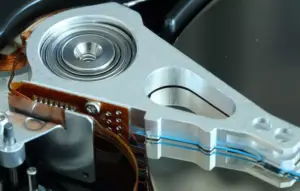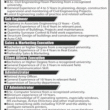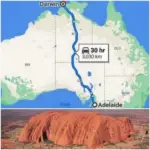Fluid mechanics
Fluid mechanics is the branch of physics that studies fluids and forces on them. Fluid is defined as any gas or liquid that adapts shape of its container. Fluid mechanics has following branches; fluid statics, the study of the behavior of stationary fluids; fluid kinematics, the study of fluids in motion; and fluid dynamics, the study of the effect of forces on fluid motion.
Applications of Fluid Mechanics in Practical Life Engineering Projects:
1. Refrigerators and Air Conditioners:
The fluids used in refrigerators and air-conditioners are known as refrigerants. The refrigerant absorbs the heat from evaporator, which is at a low temperature, and distributes that heat to the atmosphere, which is at a high temperature. In air conditioners, the refrigerant absorbs room heat and throws it in to the atmosphere keeping the room cool. The whole process of refrigerators and air-conditioners depends on the use of a refrigerant.
2. Airflight:
One of the most ordinary applications of Bernoulli\’s principle is airflight. The airplane wing is curved from the top and flat from the bottom. While moving in sky, the air on the bottom moves slowly and builds more pressure on the bottom, and allows for the air on the top to move faster, which builds less pressure. This creates lift, which allows planes to fly. An airplane is also acted upon by a pull of gravity in which faces lift, drag and thrust. Thrust is the force that allows the airplane to move forward while drag is air resistance that opposes the thrust force.
3. Sailing:
The principle of sail is same as an airplane wing. Sail boats have two parts: a sail which points north and a keel which points on the opposite direction. When the wind movements are on one side it fills the sail while the air flowing on the other side is moving faster and cannot push as hard and thus the sail receives a force which is perpendicular to the direction of the wind. Usually this would not push the boat against the wind but the keel of the boat again resists much of the horizontal movement so that the boat only moves in forward direction, providing that the combined forces that are pushing the boat perpendicular to the wind are greater than the force of the wind pushing the entire boat and sails backwards.
4. Pump & motor:
Pump is a device which is made for moving fluid, and it is done by developing a pressure difference, causing the fluid to move from an area of high pressure to low pressure. Its procedure is based on both Pascal\’s and Bernoulli\’s principles.
The hydraulic motor is the rotary complement of the hydraulic cylinder. Conceptually, a hydraulic motor should be compatible with the hydraulic pump, due to the fact it performs the opposite function. However, most hydraulic pumps cannot be functioned as hydraulic motors because they cannot be back driven. The hydraulic motor is typically designed for the working pressure at both sides of the motor.
5. Hydraulic brake system:
Hydraulic brakes system is a method to stop an object by applying energy. Hydraulic brakes work when you push the brake pedal, it pushes the small piston. The piston transfers pressure on the brake fluid, which press the brake pads on the large pistons. The brake pads come in contact with the brake drum and slow the car, ultimately stopping it.
6. Jack:
Jack is a device that uses force to lift heavy loads. The working principle depends upon Pascal\’s principle. Usually it consists of screw thread or hydraulic cylinder. Jacks can be classified by the type of force they employ: mechanical or hydraulic. Car jacks and house jacks usually known as Mechanical jacks can lift heavy equipment and are rated by their lifting capacity. Hydraulic jacks considered as stronger because they can lift heavier loads higher, and include bottle jacks and floor jacks.
7. Waterwheel:
One of the great engineering successes of ancient times was the development of the waterwheel, which includes a series of buckets along the rim that made it possible to raise water from the river below and scatter it to other points. In 70 B.C, Roman engineers acknowledged that they could use the power of water itself to turn wheels and grind grain.
8. House fan & Turbine:
Turbine is a machine which converts kinetic energy of fluids into useable mechanical energy by passing the stream of fluid through the series of fixed moving fans or blades. A common house fan is a model of turbine in reverse: the fan adds energy to the passing fluid (air), whereas a turbine extracts energy from passing fluids (air and water). The turbines are also used for the extraction of power from hydroelectric dams.
9. Hydroelectric dams:
Most dramatic examples of fluid mechanics in action are hydroelectric dams. They are huge in size and equally impressive in power they can generate using completely renewable resource; water. The steel and concrete structure of hydroelectric dam holds back millions of tons of water from the river or other body. The water nearest the top has enormous potential energy. Hydroelectric power is generated by allowing controlled streams of this water to flow downward, collecting kinetic energy that is then transferred to powering turbines, which in turn creates electric power.
10. Air compressor:
Air compressor delivers air into nail gun. An air compressor is a device that transforms power generally from an electric motor, a diesel engine or a gasoline engine into kinetic energy by compressing and pressurizing air, which can be released in rapid bursts. There are numerous procedures of air compression, divided into positive-displacement or negative-displacement types.
An air compressor technique is used fill high-pressure clean air gas cylinders, for filling tires and to produce large volumes of moderate-pressure air for large-scale industrial processes (such as oxidation for petroleum coking or cement plant bag house purge systems).
11. Gears:
Gears are an important part of model cars, without them, they wouldn’t be able to transfer the rotation of the engine to the wheels (unless they used rubber bands, of course!).
They do more than transfer the rotation of the engine though, as they are responsible for matching the available torque/power of the engine to create a mixture of acceleration and speed to other parts of the car.
12. Water Slides or roller coasters:
Coaster cars are driven by gravity. At the beginning of the ride, the coaster car rises higher in the air, its potential energy increases and then it is released from the top of the hill, and gravity pulls it down the track by converting potential energy to kinetic energy.
Water slides work on exactly the same principle. Climbing the stairs constructs certain amount of potential energy, this turns into kinetic energy as you slide down. Apart from total height, the main difference between different water slides is the way they put the potential energy to work. This is determined by the shape of the slide.
Coaster cars have wheels that roll along the track which decreases the friction between the car and the track, so the car can keep moving. Water slides have a continuous stream of water flowing from top to the bottom. The water lubricates the slide to minimize the friction between the slide and your body.


















This comment has been removed by a blog administrator.
This comment has been removed by a blog administrator.